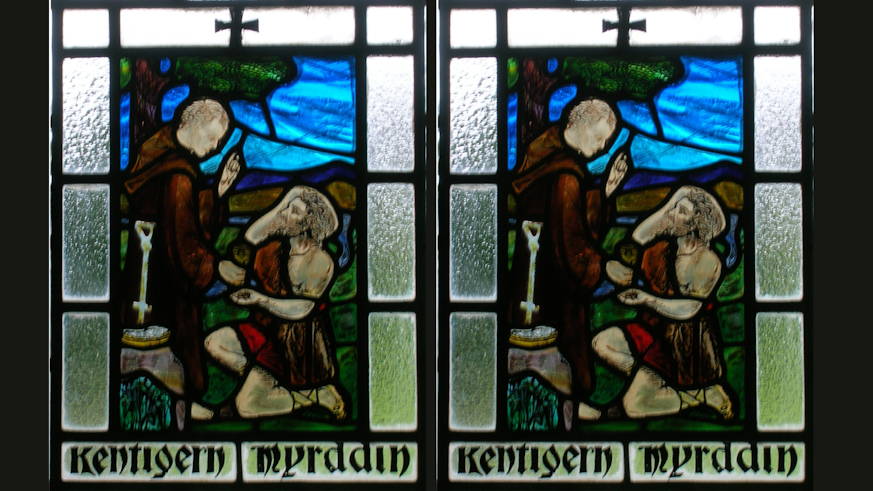Revealing the original Merlin
24 November 2021

Dr Dylan Foster Evans, Head of Cardiff University’s School of Welsh, is set to lead a new three-year project to develop a digital edition and translation of Welsh poetry associated with Merlin - or ‘Myrddin’, as he is known in Welsh.
The project (An Edition of the Welsh Merlin Poetry), which has received £716,013 in funding from the Arts and Humanities Research Council (AHRC), will begin in March 2022. It involves researchers from Cardiff University (including the School of Welsh’s Dr David Callander), the University of Wales Centre for Advanced Welsh and Celtic Studies, and Swansea University.
Dr Foster Evans said: “I’m thrilled to be leading this exciting new research project, delving deep into medieval literature and the Merlin legend. There’s a lot of work ahead but we’ve got a passionate and talented team to make the journey.”
The new project will explore the relationship between the Welsh Merlin poems and broader Arthurian tradition, popularised throughout Europe by Geoffrey of Monmouth (d. 1154/5), who was the first to bring the figures of Arthur and Merlin together. The comparative aspects of the project will position the Welsh poems in a broader European context, affirm their interdisciplinary scope and relevance, and put them at the heart of international Arthurian studies.
“While a significant amount of poetry associated with Merlin survives in manuscripts, much of it is inaccessible – unedited and also lacking translations. We are committed to making the corpus available to all in an accessible, digital format. The project also aims to throw new light onto the development of Welsh poetry and the origins of the Merlin and Arthurian legends."

“Editing and translating the corpus, and creating an open, online home for it, will allow a range of audiences to engage with the materials – many for the first time. This includes scholars, Arthurian enthusiasts and organisations across the education and heritage sectors. And given the continued interest in the Arthurian legend in film and television, it will also offer the creative industries new insights into the inspiration behind the Merlin of folklore.”
Dr Foster Evans and colleagues will tackle around a hundred poems totalling well over 4,000 lines. They will consult hundreds of manuscripts, including the earliest poetry manuscript in the Welsh language, the Black Book of Carmarthen (c. 1250). While the editing and translating is underway, a series of outreach and engagement events will take place, working with schools and a range of heritage organisations.
The project will culminate with the launch of the website – the full corpus – around the end of 2024.
Dr Foster Evans concluded: “Our aim is to deepen the awareness and understanding of the poetry associated with Merlin and its role in shaping the Arthurian legend familiar to us all, while making it accessible to new audiences. As well as making possible new avenues of research in the wider field of Arthurian studies, we also hope to change public perceptions of Merlin – or rather Myrddin, as he is called in this poetry. His traditions are deeply rooted in the Welsh landscape, not least in Carmarthen itself, whose name – Caerfyrddin – has long been interpreted as meaning ‘Myrddin’s Fortress’. This is just one indication of his significance in the imagination of medieval Wales.”
Share this story
The School is committed to the development of language, society and identity in contemporary Wales through teaching and research of the highest standard.


